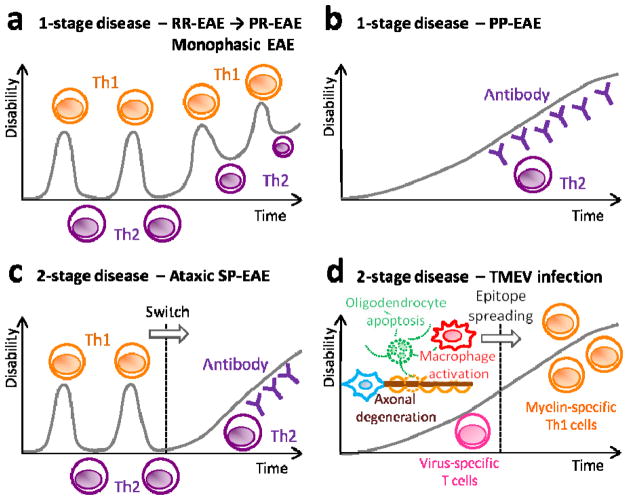Fig. 1.
The 1-stage (a, b) and 2-stage (c, d) disease theories of MS. (a) Classical EAE and RR-EAE are 1-stage diseases where the relapses and remissions of disease courses are due to the balance between inflammatory (Th1 and Th17 cells) versus regulatory (Th2, Treg, and NKT cells) cells. In this scheme, Th1/Th17 cells contribute to relapse and Th2, Treg, and NKT cells support remission. During the SP phase of the 1-stage disease theory, immune responses are skewed toward inflammatory responses. Here, the pathomechanisms of SP-MS remain the same during the disease course (intra-individual homogeneity); excessive anti-myelin inflammatory responses result in secondary axonal degeneration. (b) PP-EAE can be a 1-stage disease, which is mediated by anti-myelin antibody with the participation of Th2 cells. (c) Ataxic SP-EAE could be a 2-stage disease, where the central effector mechanisms change and the RR disease course shifts to the SP course. Here, a new effector mechanism, such as increased autoantibody production, is promoted by Th2 cells, leading to disease progression (intra-individual heterogeneity). (d) TMEV-induced demyelination is also a 2-stage disease. During the first stage, axonal damage, oligodendrocyte apoptosis, and macrophage activation leads to demyelination. During the second stage, epitope spreading results in generation of anti-myelin immune responses, contributing to disease progression.
EAE: experimental autoimmune encephalomyelitis; PP: primary progressive; RR: relapsing-remitting; SP: secondary progressive; TMEV: Theiler’s murine encephalomyelitis virus

